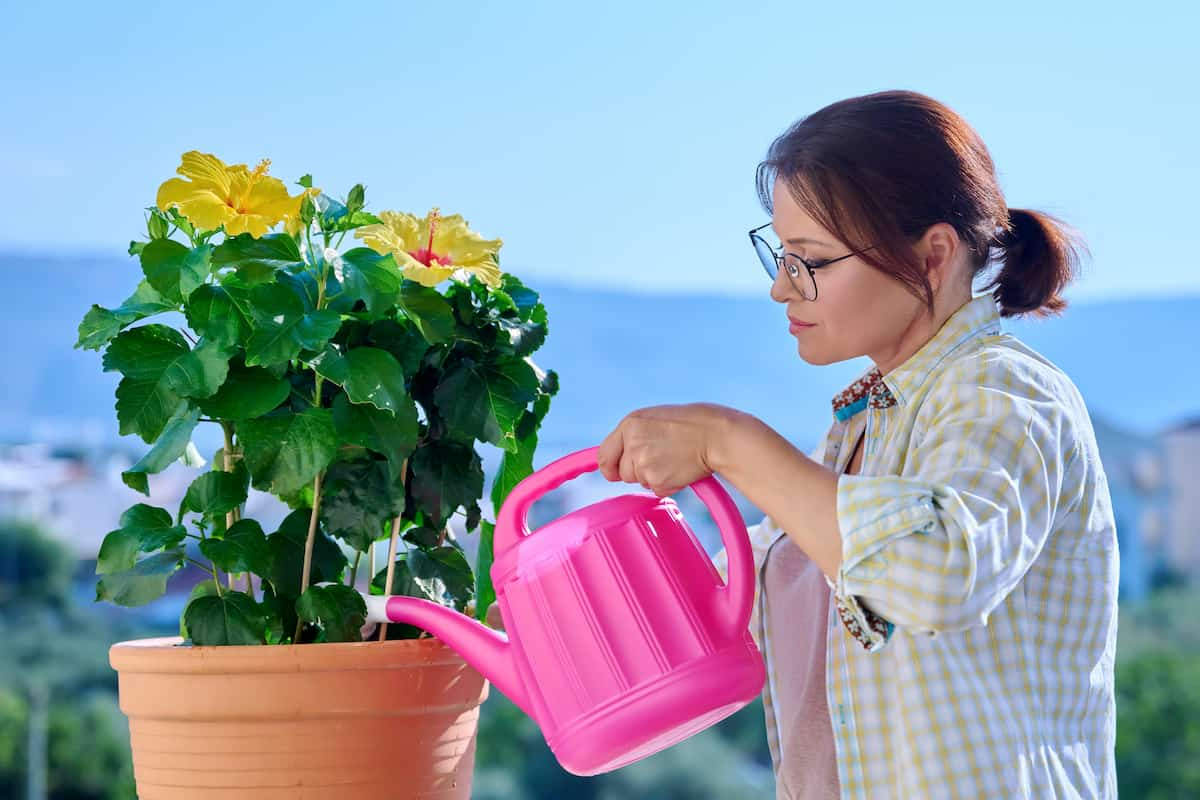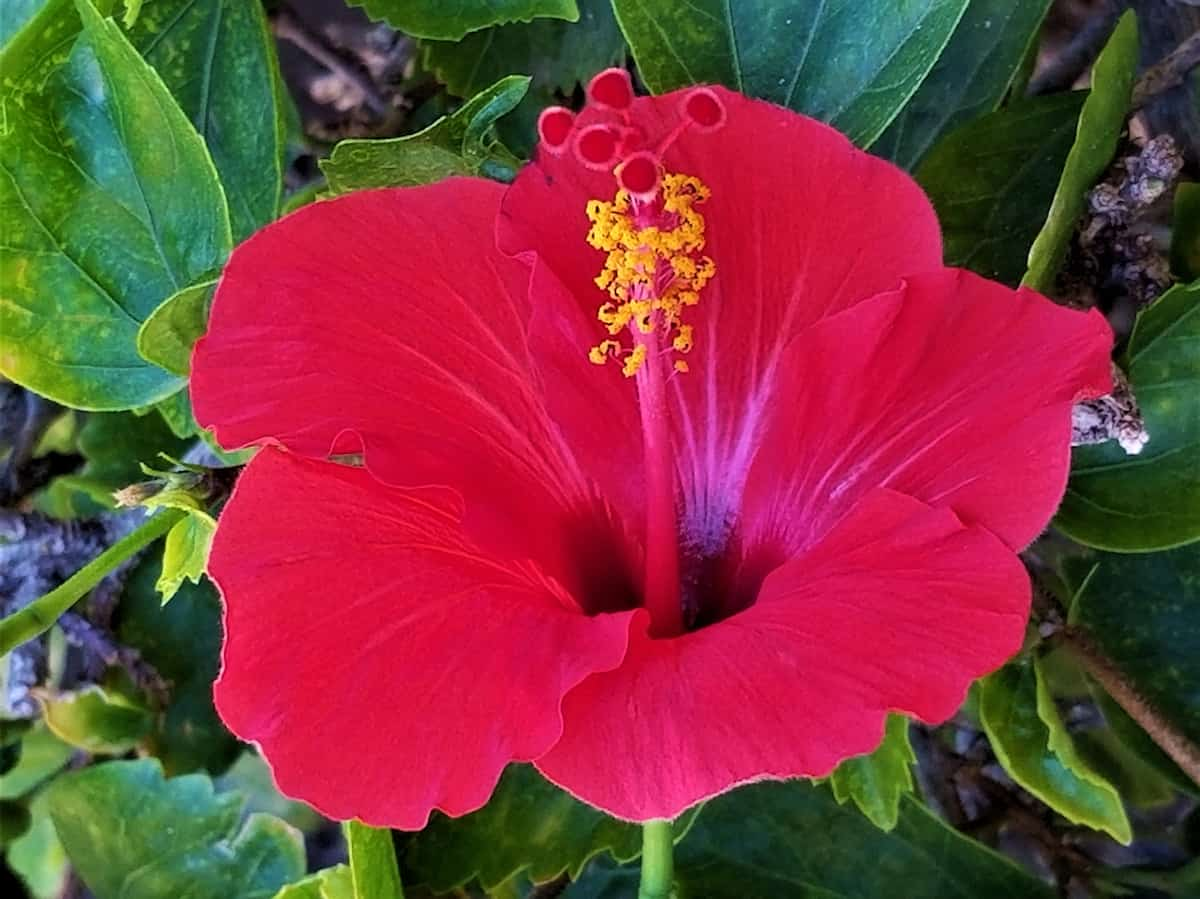Hibiscus is a stunning tropical plant that produces large and colorful flowers in various colors, such as red, pink, orange, yellow, and white. One of the easiest ways to propagate hibiscus is through stem cuttings. This method allows you to create new plants that are identical to the parent plant, which is great if you want to grow more hibiscus plants in your garden or share them with friends and family. In this article, we will guide you through how to grow hibiscus from cuttings in 10 simple steps.

How to Grow Hibiscus from Cuttings
Right Time to Take the Cuttings
The best time to take cuttings from a hibiscus plant is in early spring when the plant is actively growing. This is because the plant will have enough energy to produce new roots and leaves. Avoid taking cuttings during winter or summer when the plant is dormant or stressed.
Choose Healthy Cuttings
Select healthy stems that are free from any signs of disease or damage. The stems should be at least 6 inches long and have 3 to 4 nodes or leaves. Nodes are the points where leaves and stems meet, where new roots and leaves will grow.
Cut the Stems
Make a clean cut just below a node on the stem using a sharp pair of scissors. Remove any flowers, buds, or leaves from the lower half of the stem, leaving only a few leaves at the top. This will reduce the plant’s energy needed to produce new roots and leaves.
Prepare the Cuttings
Dip the cut end of each stem in rooting hormone powder, which will encourage the stem to produce roots. Shake off any excess powder and tap the stem to remove any loose powder.
Plant the Cuttings
Put some potting mix that drains properly into a small pot or container. Make a small hole in the center of the soil and insert the cutting into the hole. Gently press the soil around the stem to hold it in place.
Water the Cuttings
Water the soil around the stem until moist but not soaking wet. Avoid overwatering, which can cause the stem to rot. Place the pot in a warm, bright, humid spot without direct sunlight.
In case you missed it: Expert Guide for Growing and Caring for Vibrant Aster Flowers

Provide the Right Conditions
Hibiscus cuttings need a warm and humid environment to root successfully. You can create a mini greenhouse by covering the pot with a clear plastic bag or a plastic dome. This will help to keep the humidity level high and prevent the soil from drying out.
Monitor the Cuttings
Check the cuttings regularly for signs of wilting, yellowing, or mold. Remove dead or yellowing leaves to prevent them from attracting pests or diseases. Repeat watering the cuttings if the soil becomes dry to the touch.
Transplant the Cuttings
After 6 to 8 weeks, the cuttings should have developed a healthy root system. You can check this by gently tugging on the stem. If you feel some resistance, it means the roots have formed. Once the roots are established, transplant the cuttings into a larger pot or directly into the ground.
Care for the New Plants
Hibiscus plants need consistent moisture but don’t like sitting in water. Water your hibiscus deeply once or twice a week, depending on the weather and the soil conditions. Make sure the soil drains well and doesn’t become waterlogged. During hot and dry weather, you may need to water more frequently to keep the soil moist. Hibiscus plants are heavy feeders and require regular fertilization to produce healthy foliage and blooms. You can fertilize your hibiscus every 2-4 weeks during the growing season.
Be careful not to over-fertilize, leading to burned leaves and poor growth. Pruning your hibiscus plant is important for maintaining its shape and promoting healthy growth. Prune your hibiscus in early spring before new growth appears. Remove any dead, damaged, or crossing branches, and trim back any branches that have become too long. You can also pinch back the tips of the branches to encourage bushier growth.
Hibiscus plants can be susceptible to pests and diseases, such as aphids, spider mites, whiteflies, and fungal infections. Inspect your hibiscus regularly for signs of pests or disease, such as yellowing leaves, wilting, or distorted growth. If you notice any issues, treat your hibiscus with an insecticide or fungicide, or remove the affected leaves or branches.
Some Additional Tips to Keep in Mind
When taking cuttings, choose semi-hardwood stems, which means they are not too soft or hard. This is the best type of stem to root successfully. Ensure the potting mix you use is well-draining to prevent the stem from rotting in water. Keep the humidity level high by misting the leaves with water or placing a water tray near the plant. You can also use a humidifier to create a more humid environment.
Don’t fertilize the cuttings until they have developed a healthy root system. Once they have, you can start feeding them with a balanced fertilizer every 2 to 4 weeks. Be patient. Hibiscus cuttings can take several weeks to root and grow, so don’t be discouraged if you don’t see any progress immediately. Keep providing the right conditions and care; you will be rewarded with new, healthy plants.
In case you missed it: How to Start Flower Farming from Scratch: A Beginners Guide

Conclusion
In conclusion, growing hibiscus from cuttings is a fun and easy way to propagate this beautiful plant. You can create new plants identical to the parent plant with the right materials, conditions, and care. Just follow these 10 simple steps, and you’ll be on your way to a garden full of stunning hibiscus blooms.
- Feed Your Flock for Less: Top 10 Tips to Save on Chicken Feed
- Ultimate Guide to Ossabaw Island Hog: Breeding, Raising, Diet, and Care
- Hatching Answers: The Top 10 Reasons Your Chickens Aren’t Laying Eggs
- Eggs and Economics: Breaking Down the Cost of Raising Backyard Chickens
- Defend Your Greens: Proven Methods to Keep Iguanas Out of Your Garden
- Ultimate Guide to Cinnamon Queen Chicken: A Comprehensive Guide for Beginners
- Ultimate Guide to California Tan Chicken: Breeding, Raising, Diet, Egg-Production and Care
- Ultimate Guide to Marsh Daisy Chicken: Breeding, Raising, Diet, and Care
- 10 Types of Chicken Farming Businesses You Can Start for Profits